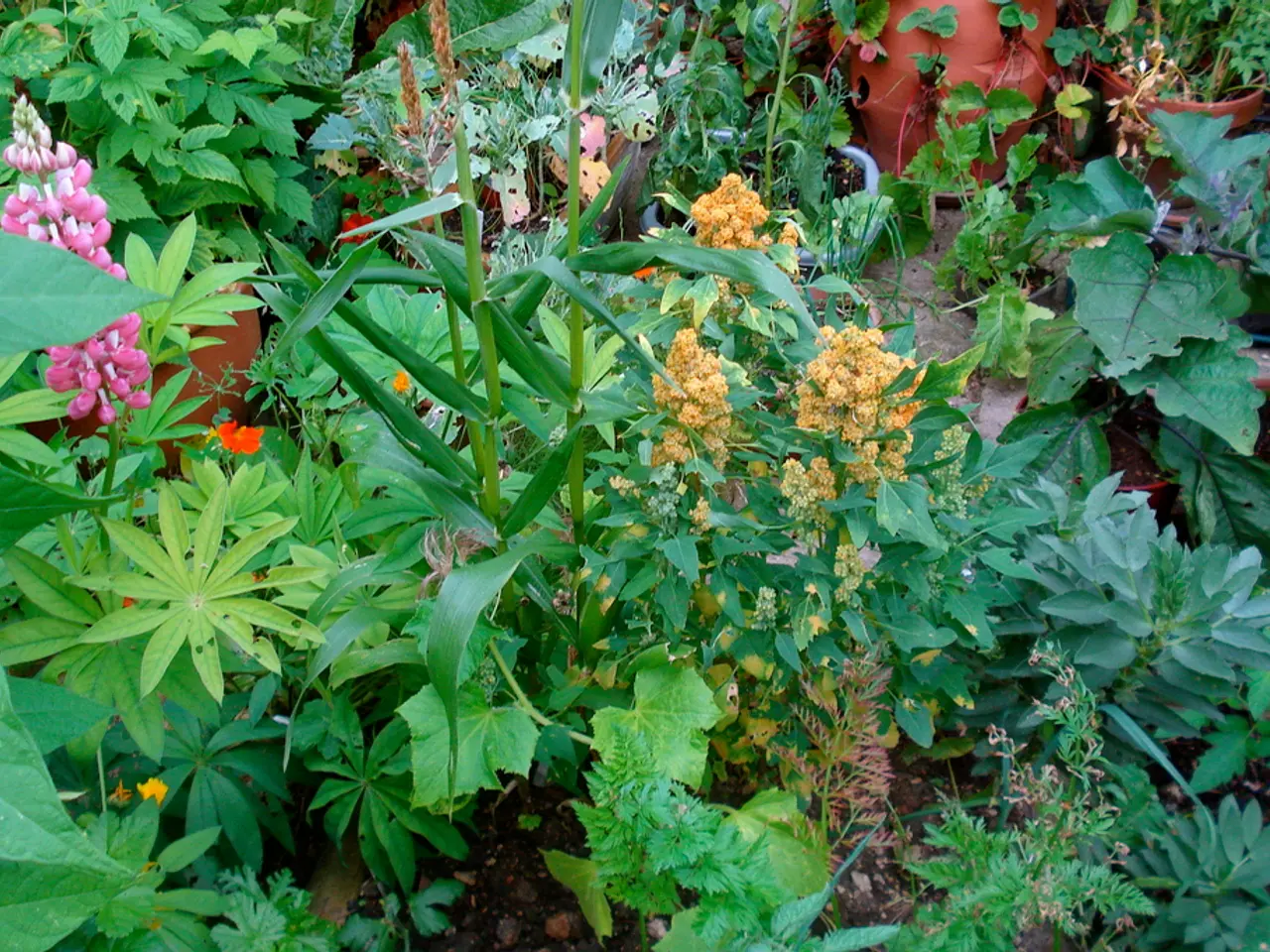Guide for cultivating plants in limited areas
For those limited by space, small space gardening offers a fantastic opportunity to cultivate a lush and vibrant garden. Here are essential tips and tricks to help beginners get started on their small space gardening journey.
**Maximizing Vertical Space**
Utilizing vertical space is crucial in small gardens. Trellises, cages, and wall-mounted systems can help grow plants upwards, ideal for vining crops like cucumbers, beans, peas, tomatoes, and eggplants. DIY options include string trellises, bamboo teepees, and repurposed household items such as old ladders or bed frames. Tiered planters and living walls can also help create multiple growing levels in a small footprint.
**The Square Foot Gardening Method**
This method involves dividing containers or garden beds into square foot sections, following recommended planting densities. Large plants like peppers should be planted one per square foot, while medium plants like spinach can accommodate 4-9 per square foot, and small plants like carrots up to 16 per square foot. This method maximizes yield and keeps plants organized.
**Choosing Suitable Plants**
Beginners should start with easy-to-grow vegetables, herbs, or flowers that fit their space and climate. Tomatoes, capsicum, spinach, lettuce, radishes, marigolds, portulaca, and pansies are suitable for small space gardening. For vertical gardening, consider plants like Rhoeo, Spider Plant, Peace Lily, and Syngonium.
**Efficient Watering and Feeding**
Small containers dry out faster, so it's essential to check soil moisture daily, especially in hot weather. Plants higher up or in exposed areas require more frequent watering. Use liquid fertilizer regularly for demanding fruiting plants like tomatoes and cucumbers to boost health and production.
**Creative Space Utilization**
Window boxes, pots lined on shelves or steps, and even hanging vinyl gutters can serve as planters. Plant companion flowers and vegetables together to save space, attract pollinators, and increase yields. Raised beds around tree bases can turn underused areas into productive garden spots.
**Keeping It Fun and Manageable**
Incorporate playful elements like small topiaries or themed planters to maintain enthusiasm. Starting small eases the learning curve and helps realistically maintain the garden.
By combining these tips, beginners can create a flourishing small space garden that is both productive and beautiful. For those with poor soil quality, consider using a mix of compost, cocopeat, and perlite to improve drainage and add nutrients. Regularly check for pests like aphids, mites, and caterpillars, and use organic insecticides like neem oil to protect plants. Ensure containers have proper drainage to prevent water accumulation and root rot. With a little creativity and planning, small areas can transform into lush, vibrant gardens, offering endless possibilities for a garden oasis.
- Utilizing vertical space in small gardens, through trellises, cages, or wall-mounted systems, can help grow plants like cucumbers, beans, peas, tomatoes, eggplants, and even plants such as Rhoeo, Spider Plant, Peace Lily, and Syngonium, thereby maximizing yield and adding a touch of aesthetics.
- The Square Foot Gardening Method, which divides containers or garden beds into square foot sections, is an efficient way to grow a variety of plants, including large plants like peppers, medium plants like spinach, and small plants like carrots, while also keeping them organized.
- For those with balconies or limited space, window boxes, pots lined on shelves or steps, and even hanging vinyl gutters can serve as planters, providing a creative solution to cultivate a small space garden.
- In small gardens, choosing the right plants is crucial, and easy-to-grow vegetables, herbs, or flowers like tomatoes, capsicum, spinach, lettuce, radishes, marigolds, portulaca, pansies, and even flowering plants such as Rhoeo, Spider Plant, Peace Lily, and Syngonium are ideal for a beginner's small space gardening journey.
- Efficient watering and feeding are essential in small spaces, as small containers dry out faster. Frequent checks on soil moisture, especially during hot weather, and regular use of liquid fertilizer for demanding fruiting plants like tomatoes and cucumbers can help ensure a lush and productive garden.
- To transform even underused areas like around tree bases into productive garden spots, consider using raised beds filled with a mix of compost, cocopeat, and perlite to improve drainage and add nutrients.
- Maintaining enthusiasm in small space gardening can be easy by incorporating playful elements like small topiaries or themed planters, starting small, and regularly checking for pests like aphids, mites, and caterpillars, using organic insecticides like neem oil to protect plants when needed. By combining these tips, a flourishing small space garden that is both productive and beautiful can be created, offering endless possibilities for a delightful home-and-garden lifestyle.




